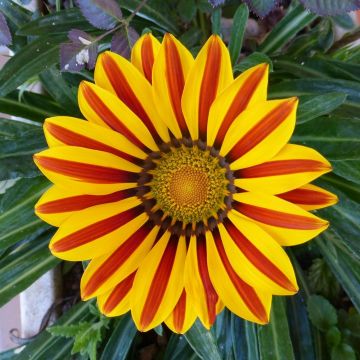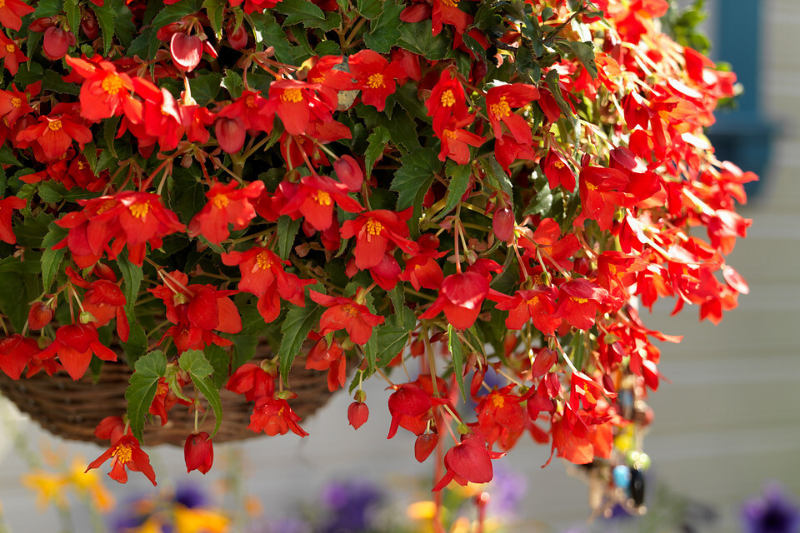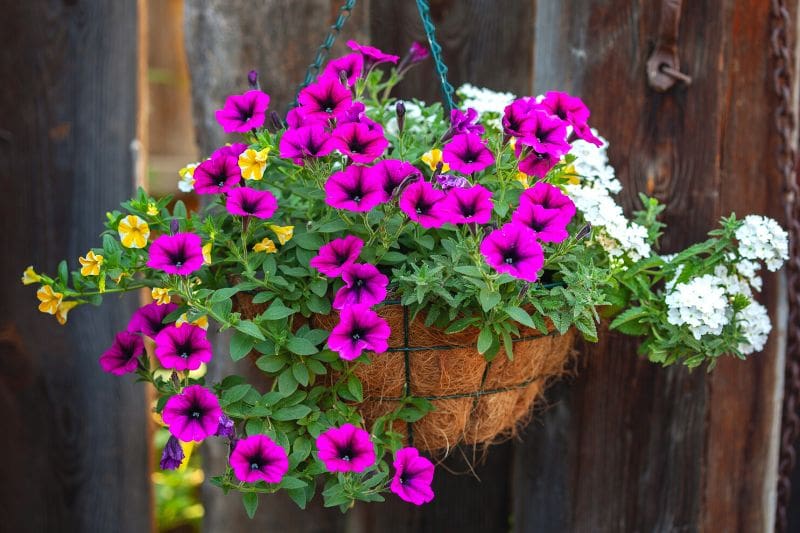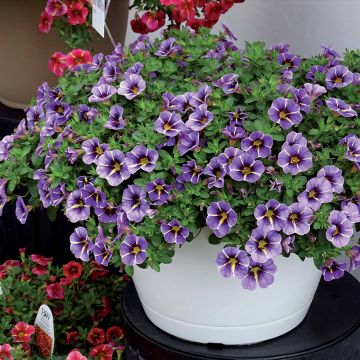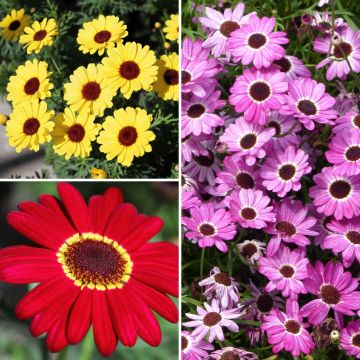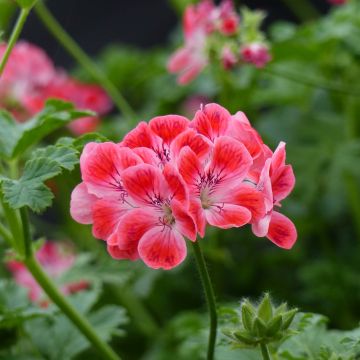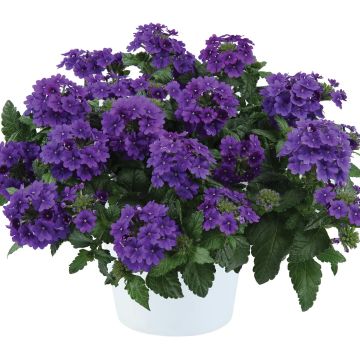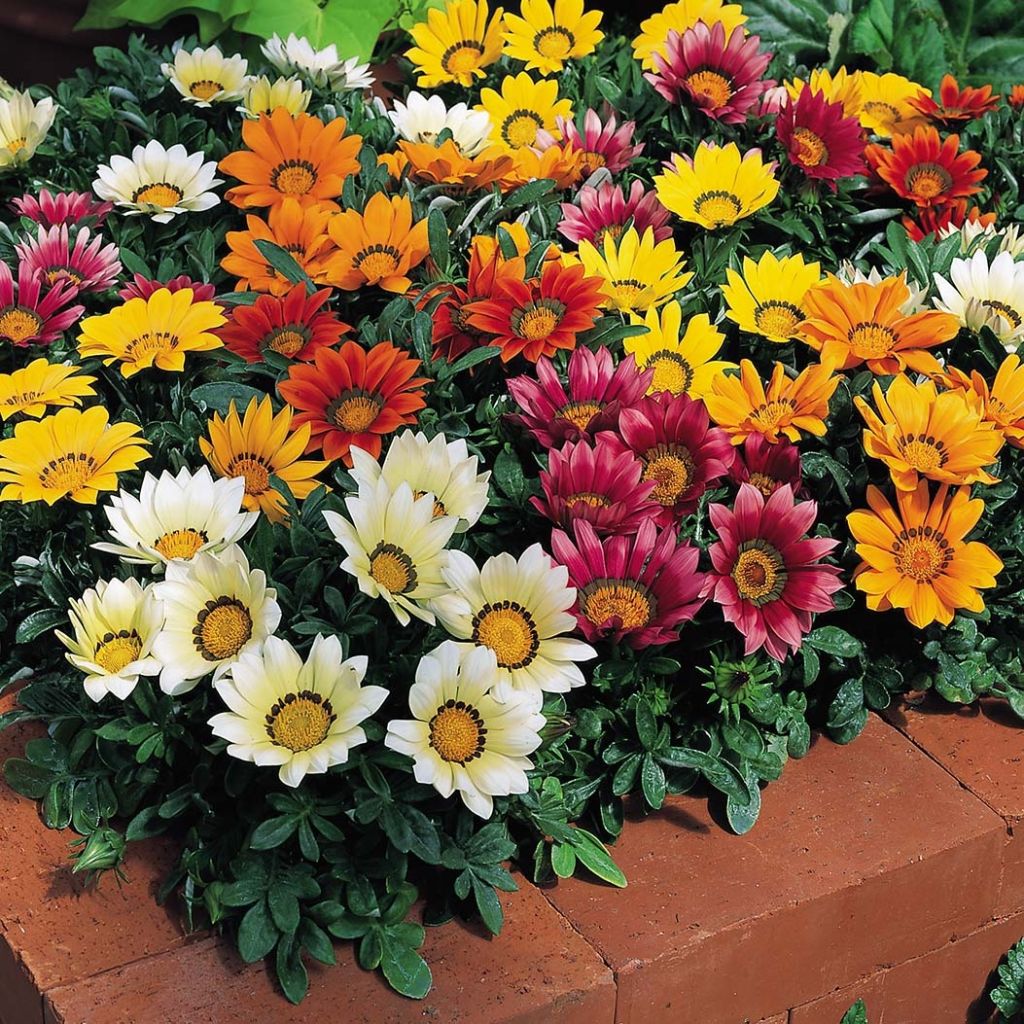

Gazania rigens Wonderwall Mix
Gazania rigens Wonderwall Mix
Gazania rigens Wonderwall mix
Treasure Flower, African Daisy
Good plant recovery Very beautiful flowers Delivered in good condition
aubertkha, 06/10/2025
Special offer!
Receive a €20 voucher for any order over €90 (excluding delivery costs, credit notes, and plastic-free options)!
1- Add your favorite plants to your cart.
2- Once you have reached €90, confirm your order (you can even choose the delivery date!).
3- As soon as your order is shipped, you will receive an email containing your voucher code, valid for 3 months (90 days).
Your voucher is unique and can only be used once, for any order with a minimum value of €20, excluding delivery costs.
Can be combined with other current offers, non-divisible and non-refundable.
Home or relay delivery (depending on size and destination)
Schedule delivery date,
and select date in basket
This plant carries a 6 months recovery warranty
More information
We guarantee the quality of our plants for a full growing cycle, and will replace at our expense any plant that fails to recover under normal climatic and planting conditions.

Would this plant suit my garden?
Set up your Plantfit profile →
Description
The Gazania Wonderwall Mix produces large daisies measuring 12 cm (4.7 in) in diameter in a beautiful range of very bright shades, solid or bicoloured depending on the plants. These small, tender and frugal perennials are exceptional for the duration of their flowering - from May to October - and for the striking beauty of their blooms. To be grown as an annual, in full sun, in well-drained soil, either in the ground or in pots.
The Gazania rigens or Treasure Flower is a plant from the Asteraceae family found throughout tropical and southern Africa. It is a fast-growing perennial, cultivated as an annual in Europe. The Gazania Wonderwall Mix brings together several improved cultivars, particularly floriferous, displaying original colors. These plants, measuring 25-30 cm (9.8 - 11.8 in) in all directions, form carpets of tightly packed, unlobed, leathery leaves, dark green with a gray-silver underside. From May to October, short stems appear, each carrying a solitary and terminal flower cluster. The flowers reach an average diameter of 12 cm (4.7 in). Each one sports a row of externally coloured ligules: the flowers are bright orange, orange edged with red, white, dark pink, or pink edged with red, and are very often adorned with a dark circle around the central disc of golden yellow color. The very tubular central florets give a velvety appearance to the central disc, which is amber to ochre yellow. Note that gazanias only open their flowers in full sun.
Gazania Wonderwall Mix should be scattered in small groups, in well-drained borders or on a sunny mound, in combination with taller, monochrome plants such as small grasses (Stipa, carex), garden irises or cinerarias. They enhance dry slopes by emphasising their contours. They are also perfect in containers under a veranda, in basins or in pots that will adorn a patio. Beginner or busy gardeners will appreciate them for their beauty as well as their simplicity. They are undemanding regarding soil type, as long as it is well-drained, and they withstand long periods of drought.
Please note that our young plants in mini-plugs are professional products intended for experienced gardeners: upon receipt, transplant and store them under shelter (veranda, greenhouse, frame) at a temperature above 14C° for a few weeks before planting outside once all risk of frost has passed.
Report an error about the product description
Gazania rigens Wonderwall Mix in pictures
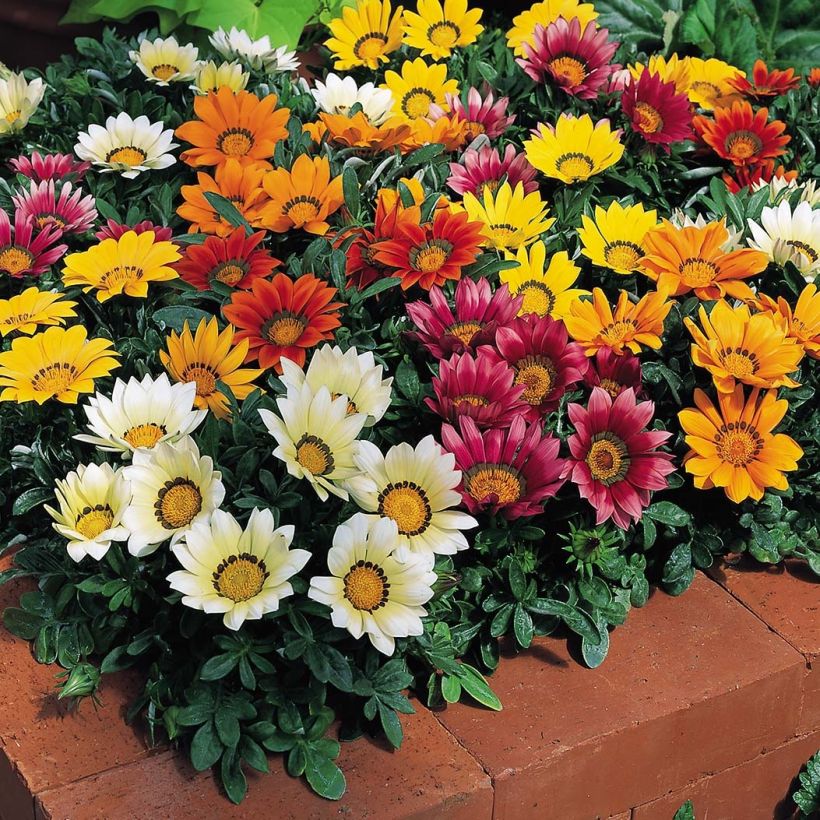

Flowering
Foliage
Plant habit
Botanical data
Gazania
rigens
Wonderwall mix
Asteraceae
Treasure Flower, African Daisy
Cultivar or hybrid
Other Gazania
View all →Planting and care
Resilient plants, gazanias easily self-seed in unexpected places, including gravel paths or areas covered in limestone. They tolerate intense heat, drought, and poor soils. In summer, even a light rain or a small amount of watering during extended dry spells will revive flowering. Plant them in well-drained, even rocky or sandy soil, in full sun. These plants do not tolerate standing water. In the Mediterranean region, they can withstand temperatures as low as -10°C for a short period when planted on a sunny slope in lightened soil. In cooler climates, the plants will be grown as annuals in open ground, or in pots that can be stored during winter to keep them for several years.
Planting period
Intended location
Care
Planting & care advice
-
, onOrder confirmed
Reply from on Promesse de fleurs
Similar products
Haven't found what you were looking for?
Hardiness is the lowest winter temperature a plant can endure without suffering serious damage or even dying. However, hardiness is affected by location (a sheltered area, such as a patio), protection (winter cover) and soil type (hardiness is improved by well-drained soil).

Photo Sharing Terms & Conditions
In order to encourage gardeners to interact and share their experiences, Promesse de fleurs offers various media enabling content to be uploaded onto its Site - in particular via the ‘Photo sharing’ module.
The User agrees to refrain from:
- Posting any content that is illegal, prejudicial, insulting, racist, inciteful to hatred, revisionist, contrary to public decency, that infringes on privacy or on the privacy rights of third parties, in particular the publicity rights of persons and goods, intellectual property rights, or the right to privacy.
- Submitting content on behalf of a third party;
- Impersonate the identity of a third party and/or publish any personal information about a third party;
In general, the User undertakes to refrain from any unethical behaviour.
All Content (in particular text, comments, files, images, photos, videos, creative works, etc.), which may be subject to property or intellectual property rights, image or other private rights, shall remain the property of the User, subject to the limited rights granted by the terms of the licence granted by Promesse de fleurs as stated below. Users are at liberty to publish or not to publish such Content on the Site, notably via the ‘Photo Sharing’ facility, and accept that this Content shall be made public and freely accessible, notably on the Internet.
Users further acknowledge, undertake to have ,and guarantee that they hold all necessary rights and permissions to publish such material on the Site, in particular with regard to the legislation in force pertaining to any privacy, property, intellectual property, image, or contractual rights, or rights of any other nature. By publishing such Content on the Site, Users acknowledge accepting full liability as publishers of the Content within the meaning of the law, and grant Promesse de fleurs, free of charge, an inclusive, worldwide licence for the said Content for the entire duration of its publication, including all reproduction, representation, up/downloading, displaying, performing, transmission, and storage rights.
Users also grant permission for their name to be linked to the Content and accept that this link may not always be made available.
By engaging in posting material, Users consent to their Content becoming automatically accessible on the Internet, in particular on other sites and/or blogs and/or web pages of the Promesse de fleurs site, including in particular social pages and the Promesse de fleurs catalogue.
Users may secure the removal of entrusted content free of charge by issuing a simple request via our contact form.
The flowering period indicated on our website applies to countries and regions located in USDA zone 8 (France, the United Kingdom, Ireland, the Netherlands, etc.)
It will vary according to where you live:
- In zones 9 to 10 (Italy, Spain, Greece, etc.), flowering will occur about 2 to 4 weeks earlier.
- In zones 6 to 7 (Germany, Poland, Slovenia, and lower mountainous regions), flowering will be delayed by 2 to 3 weeks.
- In zone 5 (Central Europe, Scandinavia), blooming will be delayed by 3 to 5 weeks.
In temperate climates, pruning of spring-flowering shrubs (forsythia, spireas, etc.) should be done just after flowering.
Pruning of summer-flowering shrubs (Indian Lilac, Perovskia, etc.) can be done in winter or spring.
In cold regions as well as with frost-sensitive plants, avoid pruning too early when severe frosts may still occur.
The planting period indicated on our website applies to countries and regions located in USDA zone 8 (France, United Kingdom, Ireland, Netherlands).
It will vary according to where you live:
- In Mediterranean zones (Marseille, Madrid, Milan, etc.), autumn and winter are the best planting periods.
- In continental zones (Strasbourg, Munich, Vienna, etc.), delay planting by 2 to 3 weeks in spring and bring it forward by 2 to 4 weeks in autumn.
- In mountainous regions (the Alps, Pyrenees, Carpathians, etc.), it is best to plant in late spring (May-June) or late summer (August-September).
The harvesting period indicated on our website applies to countries and regions in USDA zone 8 (France, England, Ireland, the Netherlands).
In colder areas (Scandinavia, Poland, Austria...) fruit and vegetable harvests are likely to be delayed by 3-4 weeks.
In warmer areas (Italy, Spain, Greece, etc.), harvesting will probably take place earlier, depending on weather conditions.
The sowing periods indicated on our website apply to countries and regions within USDA Zone 8 (France, UK, Ireland, Netherlands).
In colder areas (Scandinavia, Poland, Austria...), delay any outdoor sowing by 3-4 weeks, or sow under glass.
In warmer climes (Italy, Spain, Greece, etc.), bring outdoor sowing forward by a few weeks.






























